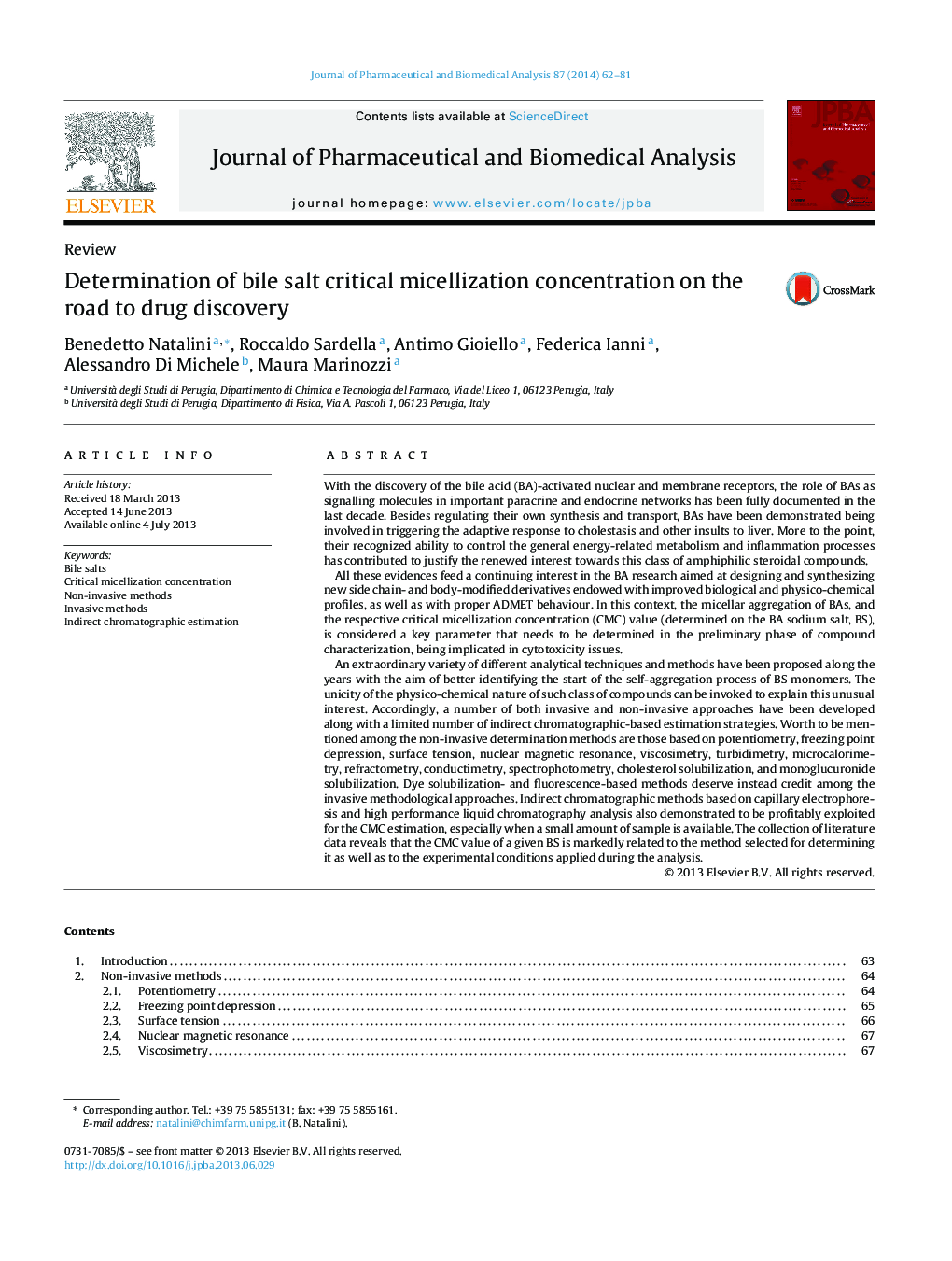| کد مقاله | کد نشریه | سال انتشار | مقاله انگلیسی | نسخه تمام متن |
|---|---|---|---|---|
| 1220864 | 1494648 | 2014 | 20 صفحه PDF | دانلود رایگان |
• BAs are signaling molecules in important paracrine and endocrine networks.
• The CMC value is implicated in cytotoxicity issues.
• Invasive and non-invasive approaches for the CMC determination have been developed.
• Few indirect chromatographic-based CMC estimation strategies have been proposed.
• CMC depends on the selected determination method and applied experimental conditions.
With the discovery of the bile acid (BA)-activated nuclear and membrane receptors, the role of BAs as signalling molecules in important paracrine and endocrine networks has been fully documented in the last decade. Besides regulating their own synthesis and transport, BAs have been demonstrated being involved in triggering the adaptive response to cholestasis and other insults to liver. More to the point, their recognized ability to control the general energy-related metabolism and inflammation processes has contributed to justify the renewed interest towards this class of amphiphilic steroidal compounds.All these evidences feed a continuing interest in the BA research aimed at designing and synthesizing new side chain- and body-modified derivatives endowed with improved biological and physico-chemical profiles, as well as with proper ADMET behaviour. In this context, the micellar aggregation of BAs, and the respective critical micellization concentration (CMC) value (determined on the BA sodium salt, BS), is considered a key parameter that needs to be determined in the preliminary phase of compound characterization, being implicated in cytotoxicity issues.An extraordinary variety of different analytical techniques and methods have been proposed along the years with the aim of better identifying the start of the self-aggregation process of BS monomers. The unicity of the physico-chemical nature of such class of compounds can be invoked to explain this unusual interest. Accordingly, a number of both invasive and non-invasive approaches have been developed along with a limited number of indirect chromatographic-based estimation strategies. Worth to be mentioned among the non-invasive determination methods are those based on potentiometry, freezing point depression, surface tension, nuclear magnetic resonance, viscosimetry, turbidimetry, microcalorimetry, refractometry, conductimetry, spectrophotometry, cholesterol solubilization, and monoglucuronide solubilization. Dye solubilization- and fluorescence-based methods deserve instead credit among the invasive methodological approaches. Indirect chromatographic methods based on capillary electrophoresis and high performance liquid chromatography analysis also demonstrated to be profitably exploited for the CMC estimation, especially when a small amount of sample is available. The collection of literature data reveals that the CMC value of a given BS is markedly related to the method selected for determining it as well as to the experimental conditions applied during the analysis.
Figure optionsDownload as PowerPoint slide
Journal: Journal of Pharmaceutical and Biomedical Analysis - Volume 87, 18 January 2014, Pages 62–81
